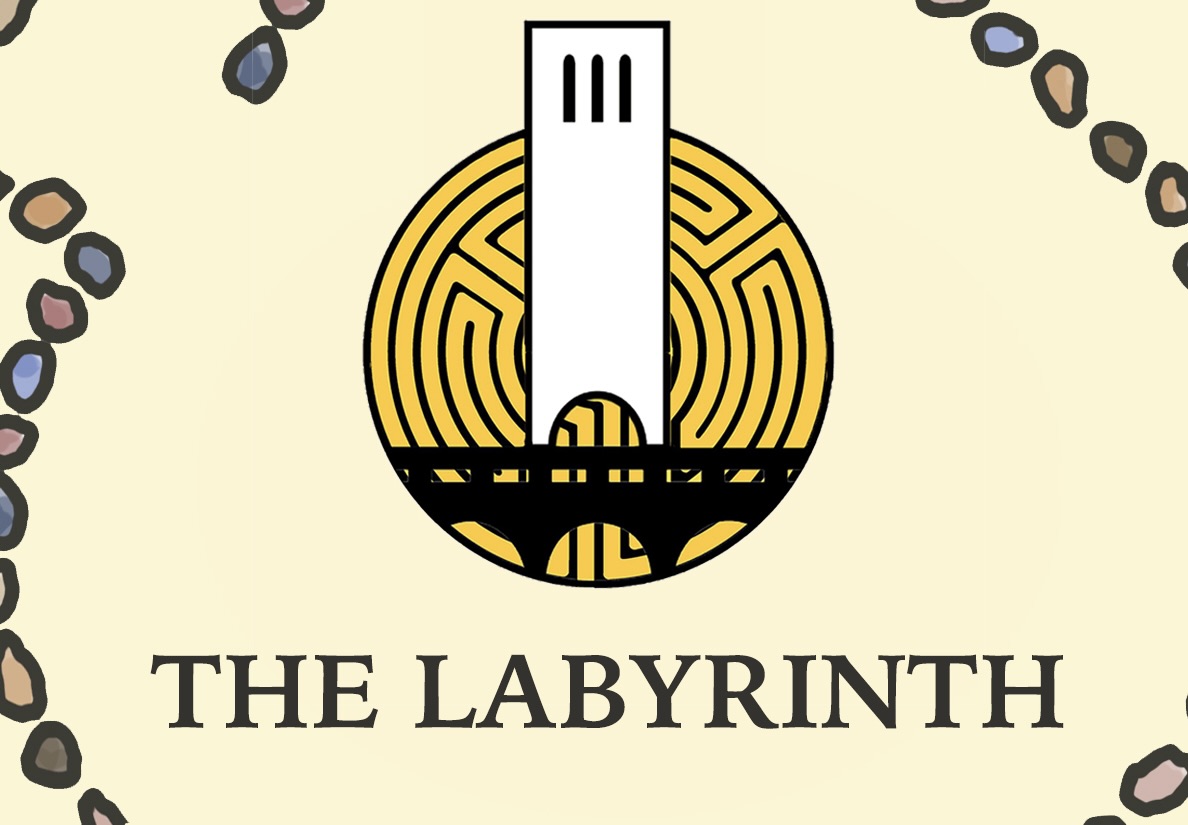Every day on my walk to campus, I am greeted by the pleasant aroma of eucalyptus trees whose smell brightens my morning and gets me excited about going to class. Eucalyptus is an iconic part of the UC Santa Barbara experience, present all around campus, forming a green border surrounding Isla Vista.
In my classes, I learned that eucalyptus was originally brought over from Australia for timber, and upon arrival they soon spread throughout the state. Now, eucalyptus is portrayed as harmful to California. The tree is allelopathic, inhibiting the growth of nearby plants, particularly trees native to California. Eucalyptus was also under fire after the 1991 Oakland Hills Firestorm, which began in an area full of eucalyptus trees. Eucalyptus’s highly flammable bark is often blamed for having made the fire worse.
Often ignored are eucalyptus’s many positive functions. The most well known is eucalyptus oil, a pest deterrent and medicinal oil found in many homes. Lesser known are eucalyptus’s ecosystem benefits in California. In Isla Vista, I have seen great horned owls and great egrets nesting in eucalyptus, and the trees are crucial habitat for migrating monarch butterflies, which are listed as vulnerable under the International Union for Conservation of Nature. At UCSB, the trees also serve as a windbreak, reducing wind in I.V. and functioning as ornamental plants. Despite these benefits, the tree is labeled as an invasive or alien species.
The terms “invasive” and “alien” are highly negative and overused labels that can cause people to overlook the complexities, good and bad, of how organisms interact with their environment. Their negativities also stem beyond scientific communication, as some political leaders commonly use these terms to demonize undocumented immigrants. Using these words to describe destructive events, like the Oakland Hills Firestorm, produces images of fear associated with these words. When these same words are used to describe immigrants, fear around immigration is conjured, increasing hate toward immigrants and facilitating mass deportations that often raise human rights concerns.
Before elaborating, I should define exactly what an “invasive species” is. However, in my time studying plant biology I have heard multiple definitions. In high school, I learned that “invasive species” were anything that was introduced to an area after the beginning of colonialism and globalization. This means that the organisms Native Americans brought over to the Americas are considered native. Anything brought over more recently is considered “introduced,” which is often used interchangeably with “invasive.” I prefer to use the neutral term “immigrant species.”
Many immigrant species are beneficial. Looking outside my house, I see “invasive” English ivy. While the plant spreads rapidly, the leaves and berries are a valuable resource for native birds and insects. Rapid spreading also makes the plant a good ground cover, allowing the soil to stay moist. In the garden I also see tomatoes, a plant that originated in South America yet no one would consider invasive. These plants only spread uncontrollably, becoming “invasive” when people improperly care for them and forget to prune or when people mistakenly bring their seeds over on ships. “Invasiveness” is a result of human actions. For human immigration, human-caused factors such as war and failing economies often drive immigration. Once in the United States, further human actions like xenophobia lead to discrimination against immigrants, reducing feelings of belonging and putting them at risk for economic hardship.
Out of control plants are considered weeds, another word used interchangeably with “invasive.” This definition includes some native plants such as horsetail, a fern-like plant found all throughout the northern hemisphere known for spreading rapidly in gardens. Due to the adverse views about them, horsetail’s medicinal benefits and soil healing properties are not widely known. Similarly, the economic benefits of immigration are often overlooked.
One government definition given in Executive Order 13112 says that an invasive species must be both introduced and perceived as harmful: “‘Invasive species’ means an alien species whose introduction does or is likely to cause economic or environmental harm or harm to human health.” This definition remains problematic, though — using “alien,” the same word used by some political leaders to dehumanize undocumented immigrants, rather than the more neutral word “introduced.”
I believe that widespread use of terms like “invasive” and “alien” when describing introduced species has helped enable the current hostile views on immigration. Use of the word ‘alien’ is literally used to describe life not from Earth and is often used in science fiction movies that portray extraterrestrials as an existential danger to all life on Earth. Using this word to describe real life groups or individuals attributes that same sense of danger to them. It becomes easy to deport immigrants en masse when people believe they are a danger to society, and negative words like “invasive” and “alien” have created this false sense of danger.
Immigration is not done out of malicious intent, nor are immigrants trying to harm their new homes. Rather, both plants and people are trying to make the best life for themselves, and in doing so, usually benefit those around them. People often focus on the few that cause net harm, but immigrants overwhelmingly provide a net benefit to their new location.
Those that do cause net harm are a small minority. The Environmental Protection Agency has determined that about 10% of immigrant plants cause enough environmental or economic harm to be classified as “invasive.” The vast majority of immigrant plants end up co-existing peacefully with the other plants, similar to how human immigrants are considered “naturalized.” As previously shown with the eucalyptus example, even those considered “invasive” may provide a lot of benefits.
Using immigrant plants as an analogy to immigration is also imperfect. Some plants, such as kudzu, can cause over $500 million in damages and reduce ecosystem functions such as carbon sequestration (although even kudzu has medicinal benefits). This kind of damage is unheard of with the immigration of people.
Labeling people as problematic is inherently harmful, but crime and associated incarceration roughly dictate what a society deems harmful. Despite outside influences, like aforementioned xenophobia, attempting to increase the incarceration rate for immigrants, it is still lower than US-born citizens by about 74%. Undocumented immigrants are often cited as the main drivers of crime, but their incarceration rate is about 50% lower than US-born citizens’. The overall incarceration rate in the United States is 1221 per 100,000 people, or 1.221%. This means that the percentage of “problematic” immigrants is less than that already small number.
By these metrics, I believe the words “invasive” and “alien” should never be used. Although there may be cases in biology where the terms are useful, the risk of collateral damage is too high to justify their use. Widespread use causes negative views to become inflicted upon entire groups. Communication, scientific and colloquial, should use neutral words to describe those entering new areas, and everyone can play a part by avoiding use of the word “invasive” in conversation.
Ben Wollack appreciates how the morning glory immigrants bring beauty to the garden.





















I’m stunned you could get this commentary published. Very few publications are “man enough” to provide this other side of the story about so-called invasive plants. ALL plants provide value and those criticized as “invasive” tend to grow in disturbed soil that has usually been depleted of most nutrients–which means the majority of native plants are unable to make a go of it there. It’s far better to have plants growing that benefit wildlife than to have barren ground supporting no wildlife. The entire “invasive”-plant narrative is fraught with erroneous accusations against extremely useful plants. Thank you for writing this… Read more »
A valuable discussion to help us reframe our understanding of who belongs. Be that human or other beings. Thank you for this piece! I will be sharing it widely!
The only truley invasive spiecies in are society our the FoxNews-watching MAGA idoits. They are morrons who do’nt believe in global warming, hate people who ar’ent white, drive there gas guzzling SUV’s around while playing Rush Limbaugh or FoxNews on there radios. They are to stupid to know that it takes a village and that we are proud democrats who will opposse them at every step.
I’d like to begin this by saying I wholeheartedly agree with your sentiment about the rampant xenophobia that is plaguing the US right now. “Invasive” and “alien” are incredibly offensive terms when used to describe people. However, believe that, in the context of botany, it serves as exclusively a scientific term. Language should be used as a means to connect people; getting caught up in semantics prevents people from working together to come to real conclusions. Also, a few of your points are not thought through: There are conflicting answers to whether or not Monarch butterflies prefer eucalyptus trees or… Read more »